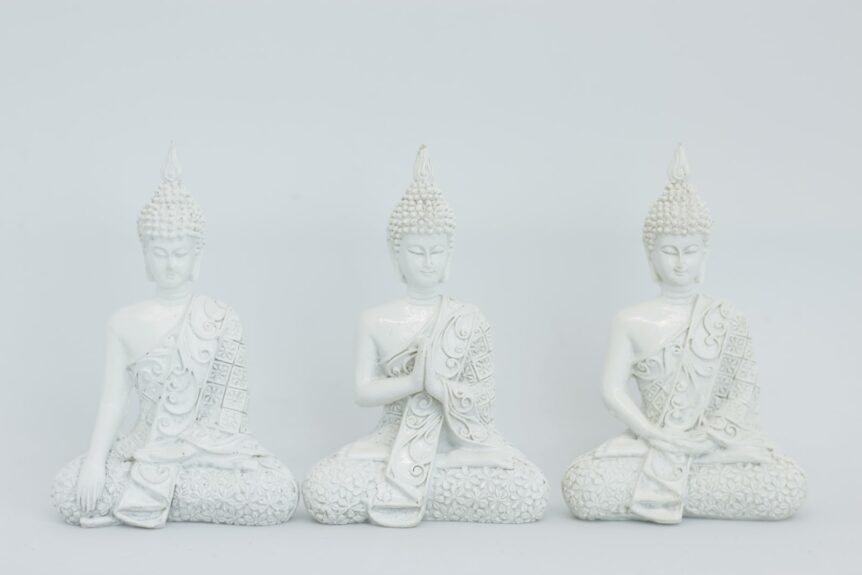Business Owners Free Guide to Mindfulness, reduce your stress and anxiety now with this free resource guide!
1. Mindfulness
- Overview: Mindfulness involves paying full attention to the present moment in a purposeful and non-judgmental way.
- Definition: Mindfulness is the act of focusing on the present, being fully aware of your thoughts, feelings, and environment.
- Techniques:
- Mindful Breathing: Practice deep breathing techniques to calm the mind before meetings or decisions.
- Body Scan: Take a few minutes during the day to mentally scan your body, checking in with areas of tension.
- Three-Minute Breathing Space: A short exercise where you focus on breathing and sensations to bring awareness back to the present.
2. Resilience
- Overview: Resilience is the ability to recover from stress or adversity.
- Definition: The capacity to quickly recover from difficulties and maintain focus.
- Techniques:
- Reframing Challenges: Change the way you perceive difficulties to build a sense of growth.
- Building Support Networks: Develop strong professional relationships that can provide emotional and practical support during tough times.
- Self-Care Routines: Ensure you have a balanced approach to work and personal life for long-term resilience.
3. Optimism
- Overview: Optimism involves expecting positive outcomes, which improves mental health and performance.
- Definition: A hopeful or positive outlook on the future, even in the face of challenges.
- Techniques:
- Gratitude Journals: Write down three things you’re grateful for at the end of the day.
- Positive Affirmations: Use daily positive statements to challenge negative thoughts and cultivate optimism.
- Celebrate Small Wins: Acknowledge and celebrate small achievements to build a habit of seeing positive outcomes.
4. Social Support
- Overview: Social support involves seeking and receiving emotional, informational, or practical help from others.
- Definition: Support from friends, colleagues, and family that helps reduce stress and promotes well-being.
- Techniques:
- Regular Check-Ins: Schedule regular meetings or calls with a mentor or trusted colleague.
- Building Community: Participate in local or professional groups where you can share experiences and receive advice.
- Peer Coaching: Pair with a colleague for mutual feedback and accountability.
5. Stress Management
- Overview: Managing stress is essential for mental clarity and productivity.
- Definition: Stress management is the practice of using techniques and strategies to cope with stress in a healthy manner.
- Techniques:
- Time Blocking: Use structured time slots for work and relaxation to prevent burnout.
- Mindful Breaks: Step away from work regularly for brief walks or relaxation exercises.
- Progressive Muscle Relaxation: Release tension by tightening and then relaxing different muscle groups.
6. Emotional Regulation
- Overview: Emotional regulation is the ability to control emotional responses.
- Definition: The process of managing and responding to emotional experiences in a constructive way.
- Techniques:
- Cognitive Behavioral Techniques: Challenge negative thoughts and reframe them into more positive alternatives.
- Breathing Exercises: Focus on slow, deep breaths when feeling overwhelmed to bring calmness.
- Emotion Journaling: Write about emotions to process them in a healthy manner.
7. Time Management
- Overview: Time management helps business owners allocate time effectively, boosting productivity.
- Definition: Organizing and planning how to divide time between different tasks and goals.
- Techniques:
- Pomodoro Technique: Work in focused 25-minute intervals followed by short breaks.
- Priority Matrix: Use the Eisenhower Matrix to categorize tasks based on urgency and importance.
- Set Boundaries: Establish clear boundaries between work and personal life to maintain focus.
8. Self-Awareness
- Overview: Self-awareness involves understanding your strengths, weaknesses, emotions, and triggers.
- Definition: The ability to recognize and understand one’s own emotions, behaviors, and motivations.
- Techniques:
- Daily Reflection: Spend five minutes reflecting on your thoughts and emotional reactions each day.
- 360-Degree Feedback: Solicit feedback from others to understand how your actions affect them.
- Strengths Assessment: Use tools like Gallup StrengthsFinder to identify your core strengths.
9. Positive Psychology Interventions
- Overview: Techniques based on positive psychology focus on boosting well-being and happiness.
- Definition: Structured exercises that foster positive emotions and promote life satisfaction.
- Techniques:
- Acts of Kindness: Perform small, random acts of kindness to others each day.
- Savoring: Focus on fully experiencing enjoyable moments, like a pleasant conversation or a delicious meal.
- Strength-Based Activities: Engage in tasks that align with your personal strengths to increase flow and engagement.
10. Empathy
- Overview: Empathy involves understanding and sharing the feelings of others, improving communication and teamwork.
- Definition: The ability to emotionally understand what other people are experiencing.
- Techniques:
- Active Listening: Listen without interrupting, focusing entirely on the speaker’s words and emotions.
- Non-Verbal Cues: Pay attention to body language and facial expressions to understand deeper feelings.
- Perspective-Taking: Put yourself in another person’s shoes to better understand their viewpoint.
11. Gratitude
- Overview: Gratitude is the practice of being thankful and appreciative for the good things in life.
- Definition: Recognizing and appreciating the positive aspects of life, which increases happiness and satisfaction.
- Techniques:
- Gratitude Journaling: Write down three things you are grateful for every day.
- Expressing Thanks: Regularly thank your colleagues and team for their contributions.
- Gratitude Reminders: Set a daily alarm to remind you to think about what you’re grateful for.
12. Burnout Prevention
- Overview: Preventing burnout is key for maintaining long-term productivity and well-being.
- Definition: Burnout is a state of emotional, physical, and mental exhaustion caused by excessive stress.
- Techniques:
- Work-Life Balance: Set clear boundaries between work and personal time to recharge.
- Delegate: Entrust tasks to others to avoid feeling overwhelmed.
- Take Mental Health Days: Allow yourself scheduled breaks to focus on recovery.
13. Cognitive Flexibility
- Overview: Cognitive flexibility is the ability to adapt to new situations and challenges.
- Definition: The mental ability to shift thinking and approach when facing new or unexpected situations.
- Techniques:
- Challenge Your Assumptions: Regularly question your mental models and try to see things from new perspectives.
- Adaptation Exercises: Practice switching between tasks and roles to enhance your flexibility.
- Feedback Loops: Regularly seek feedback and adjust your behavior based on insights.
14. Goal Setting
- Overview: Setting clear, actionable goals helps maintain focus and direction.
- Definition: The process of defining objectives and planning the actions needed to achieve them.
- Techniques:
- SMART Goals: Set goals that are Specific, Measurable, Achievable, Relevant, and Time-bound.
- Vision Mapping: Create visual representations of your goals and the steps required to achieve them.
- Accountability Partners: Share your goals with a trusted person who will hold you accountable.
15. Self-Care
- Overview: Self-care involves activities that nurture and restore your physical and mental health.
- Definition: Engaging in practices that improve well-being and prevent burnout.
- Techniques:
- Exercise: Incorporate regular physical activity into your routine for mental clarity and stress relief.
- Sleep Hygiene: Ensure you get quality sleep each night by following a consistent sleep schedule.
- Relaxation Techniques: Practice activities like deep breathing, meditation, or a warm bath to relax.
16. Compassion
- Overview: Compassion involves feeling concern for others’ suffering and the desire to help.
- Definition: A deep awareness of others’ distress, coupled with a desire to alleviate it.
- Techniques:
- Compassionate Leadership: Lead with empathy and understanding, especially in difficult times.
- Supportive Conversations: Engage in open and caring dialogues with employees who are going through tough times.
- Mindful Compassion: Practice mindfulness while engaging with others to enhance emotional connection.
17. Reflection
- Overview: Regular reflection helps in personal and professional growth.
- Definition: Taking time to think deeply about your actions, motivations, and lessons learned.
- Techniques:
- End-of-Day Reflection: Spend 10 minutes at the end of the day reviewing what went well and what could be improved.
- Weekly Reviews: Assess your goals and progress weekly to stay on track.
- Feedback Reflection: After receiving feedback, take time to consider how you can apply it for future improvement.
18. Positive Reinforcement
- Overview: Reinforcing positive behaviors boosts morale and encourages desired outcomes.
- Definition: The act of rewarding or acknowledging positive behavior to encourage its recurrence.
- Techniques:
- Praise and Recognition: Acknowledge team members’ efforts through verbal praise, rewards, or recognition programs.
- Incentive Programs: Create reward systems for hitting business targets or personal milestones.
- Public Celebrations: Celebrate successes and progress openly within the team.
19. Emotional Intelligence
- Overview: Emotional intelligence (EQ) is the ability to understand and manage your own emotions and recognize emotions in others.
- Definition: EQ involves self-awareness, self-regulation, motivation, empathy, and social skills.
- Techniques:
- Mindful Listening: Practice active listening to fully understand others’ emotions.
- Emotional Check-Ins: Regularly assess your emotional state to remain in control during challenging situations.
- Empathetic Responses: Respond to others with compassion and understanding.
20. Balance and Boundaries
- Overview: Establishing boundaries helps protect personal time and prevents burnout.
- Definition: Clear limits on work and personal life that ensure time for rest and recovery.
- Techniques:
- Work Hours Boundaries: Set specific work hours and resist working outside those hours.
- Saying No: Politely but firmly decline additional tasks that threaten your well-being.
- Delegation: Share responsibilities with others to ensure balanced workloads.
Need more help? Contact me for a Free Consultation!


